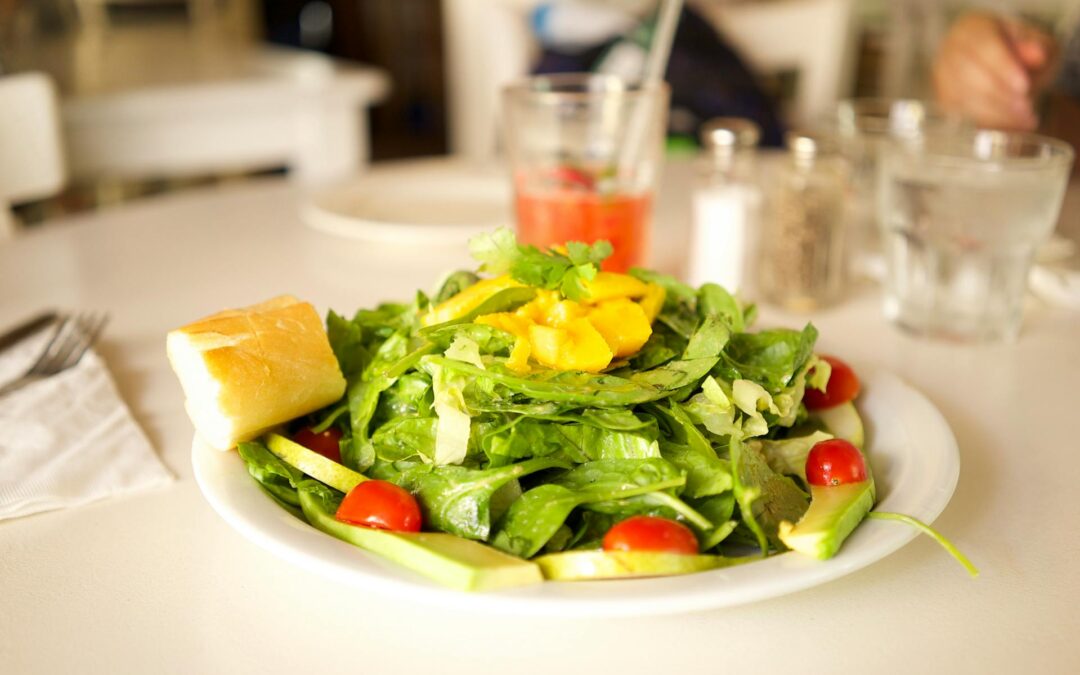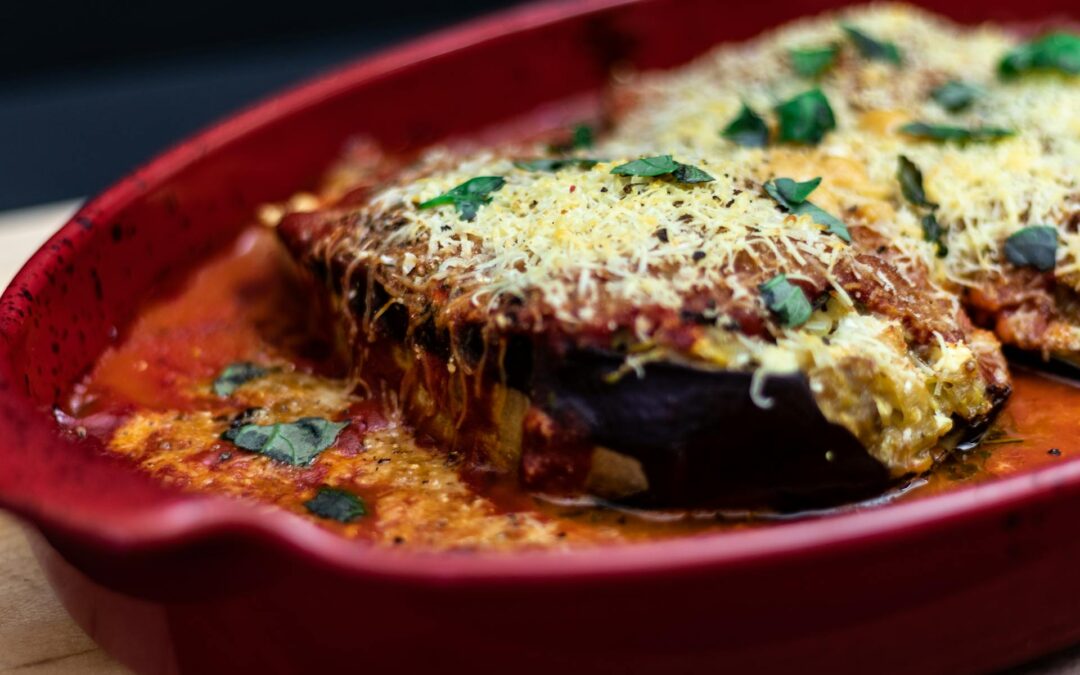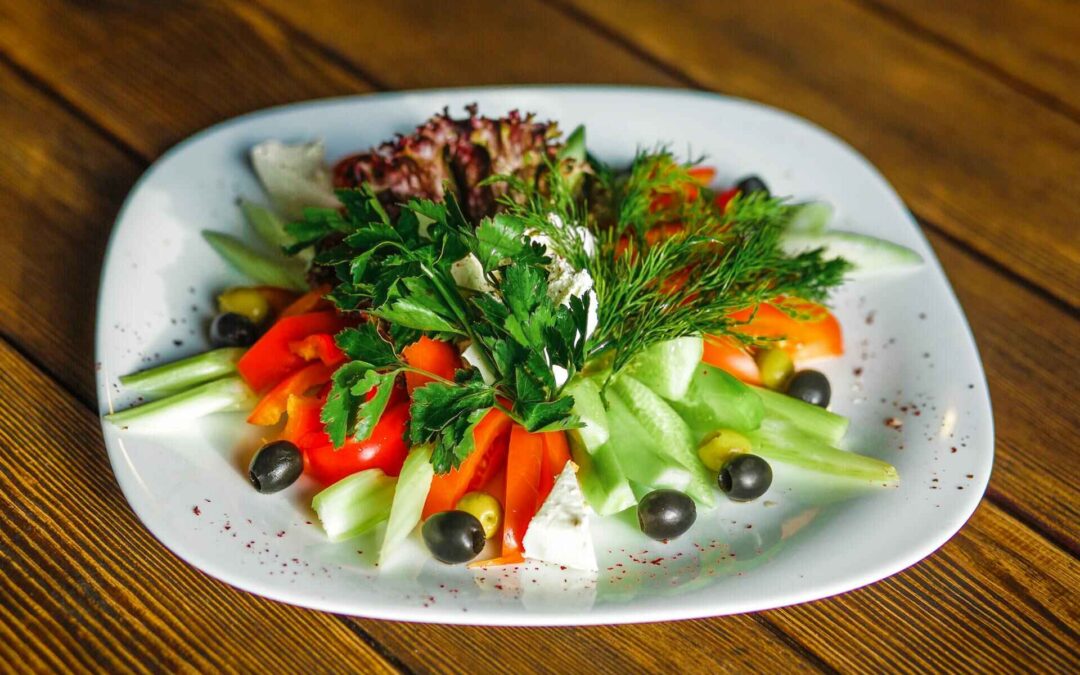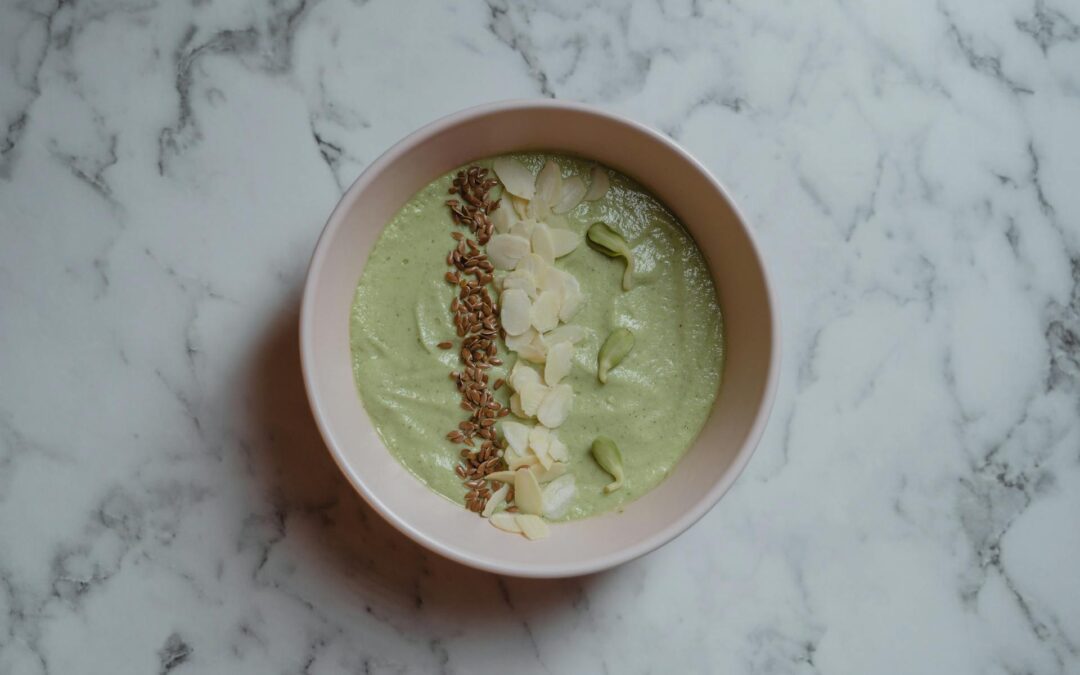Starting a low carb vegetarian meal plan can feel challenging, but with the right guidance and recipes, it’s easier than you’d think. This plan offers a week of nourishing, meat-free meals with a focus on low-carb ingredients. In this guide, you’ll discover practical meal planning tips, a detailed 7-day menu, and expert advice on sticking to a healthy, balanced low-carb vegetarian diet.
Understanding the Low Carb Vegetarian Diet
What is a Low Carb Vegetarian Diet?
The low carb vegetarian diet focuses on minimizing carb intake while sticking to plant-based meals. Unlike traditional low-carb diets that often rely on animal products, this diet adapts to vegetarian-friendly sources of protein, fats, and fiber-rich carbs.
Benefits of a Low Carb Vegetarian Diet
A low carb vegetarian lifestyle offers a range of health benefits, such as: (1)
- Weight Management – Lowering carbs can help with weight management.
- Balanced Energy Levels – Focusing on healthy fats and proteins keeps energy steady.
- Improved Metabolic Health – A low-carb approach supports stable blood sugar.
Common Misconceptions About Low Carb Vegetarianism
Some people believe that without meat, low carb diets lack sufficient protein or essential nutrients. Fortunately, with the right ingredients, it’s entirely possible to meet your dietary needs while sticking to a low-carb, plant-based meal plan. (2)
Key Ingredients in a Low Carb Vegetarian Diet
Choosing the right ingredients is essential for creating a nutrient-dense, low-carb meal plan without meat. Here are some essentials:
High-Protein Plant-Based Foods
For adequate protein, focus on vegetarian-friendly protein sources like: (3)
- Tofu and Tempeh
- Legumes like lentils (in moderation for carbs)
- Nuts and Seeds
Low-Carb Vegetables
To keep carbs in check, choose low-carb, nutrient-dense vegetables such as:
- Leafy Greens like spinach and kale
- Cruciferous Veggies like broccoli and cauliflower
- Zucchini and other squash varieties
Healthy Fats for Low Carb Meals
Including healthy fats is crucial for satiety. These plant-based fats can help:
- Avocado for creamy textures
- Nuts and Seeds like chia, flax, and walnuts
- Olive Oil for cooking and salad dressing
How to Get Started with a Low Carb Vegetarian Meal Plan
Below are actionable steps to help you get started with a low carb vegetarian diet, from meal prep to nutrient balancing.
Set Clear Goals and Understand Your Carb Limits
Before diving in, it’s essential to know why you’re choosing a low carb vegetarian plan. Are you looking to lose weight, improve energy levels, or support blood sugar stability? Defining your goals can help guide your meal choices.
- Determine Your Carb Limit: Low-carb diets typically range between 20 to 100 grams of net carbs daily. Decide on your goal with a range that works for you and is sustainable.
- Choose Quality Carbs: Prioritize fiber-rich vegetables and avoid high-sugar fruits. Sticking to low-carb options like leafy greens, cruciferous vegetables, and zucchini will help you stay within your limits.
Plan Your Weekly Meals and Prep in Advance
Meal planning is crucial for sticking to a low carb vegetarian diet and ensuring you have the right ingredients on hand. Set aside some time each week to plan, shop, and prep your meals.
- Create a Weekly Menu: Write out your meals and snacks for each day to avoid last-minute, carb-heavy decisions.
- Batch Cook and Store: Prepare large batches of essentials like roasted vegetables, tofu, or cauliflower rice. Portion them out in containers so you can grab them easily throughout the week.
- Organize a Shopping List: Make a list of ingredients based on your meal plan. Stick to the produce, protein, and healthy fat sections of the store to avoid unnecessary high-carb temptations.
Focus on Protein and Healthy Fats
A low carb vegetarian meal plan relies on plant-based protein sources and healthy fats to help you stay full and satisfied. Carbs are reduced, so it’s crucial to replace them with other nutrient-dense food groups.
- Plant-Based Proteins: Include tofu, tempeh, edamame, nuts, seeds, and Greek yogurt (if you consume dairy). These foods help keep you full and provide essential amino acids.
- Healthy Fats: Healthy fats are essential in a low carb diet. Incorporate avocados, olives, olive oil, nuts, and seeds for added flavor and satiety.
Sample Macronutrient Breakdown
- Protein: Aim for 20-30% of your daily intake from protein sources.
- Fats: Fill about 50-60% of your daily intake with healthy fats.
- Carbs: Limit carbs to 10-20% of your intake, focusing on high-fiber vegetables.
Incorporate Low-Carb Vegetables in Every Meal
Vegetables are the foundation of a healthy vegetarian diet, and low-carb options are plentiful. These veggies are low in calories, packed with fiber, and full of essential vitamins and minerals.
- Best Choices: Leafy greens (spinach, kale), cruciferous vegetables (broccoli, cauliflower), and other low-carb veggies (zucchini, bell peppers, cucumbers).
- Variety Is Key: Rotate different veggies to enjoy a diverse range of nutrients and avoid boredom.
- Meal Ideas: Use zucchini noodles instead of pasta, make cauliflower rice as a base for stir-fries, and try lettuce wraps in place of tortillas.
Benefits of Low-Carb Vegetables
- High in Fiber: Keeps you full and supports digestion.
- Nutrient-Dense: Loaded with vitamins and minerals to support overall health.
- Low in Calories: Helps you stay within your carb and calorie limits.
Understand Portion Sizes and Macronutrient Ratios
With a low carb vegetarian diet, knowing your portion sizes and balancing your macronutrients is essential for success. This diet focuses on high-quality proteins, healthy fats, and fiber-rich vegetables, with fewer carbs.
- Balance Your Plate: Aim to fill half your plate with low-carb vegetables, a quarter with protein, and a quarter with healthy fats.
- Track Your Intake: Many find that tracking meals helps ensure they’re meeting nutrient targets. Apps like MyFitnessPal or Cronometer make this easy and help you stay on track.
Example Balanced Meal
- Plate Half Full: Roasted broccoli, cauliflower, and spinach.
- Protein: Grilled tofu or tempeh, seasoned with herbs and spices.
- Healthy Fats: Avocado slices, a handful of nuts, or a drizzle of olive oil.
Stock Your Pantry with Low-Carb Essentials
Creating a pantry stocked with low-carb essentials helps you stay prepared, even on busy days. Having key ingredients on hand can prevent slip-ups and help you make quick meals when time is limited.
- Nuts and Seeds: Almonds, chia seeds, flaxseeds, and sunflower seeds are excellent sources of healthy fats and fiber.
- Plant-Based Oils: Olive oil, coconut oil, and avocado oil are versatile for cooking and dressing.
- Herbs and Spices: Add flavor with herbs and spices without adding carbs. Try basil, rosemary, garlic, turmeric, and cumin.
- Low-Carb Staples: Tofu, tempeh, canned olives, coconut milk, and almond flour are versatile pantry staples that can be used in various low-carb recipes.
Shopping List Tips
- Stick to Whole Foods: Avoid packaged and processed foods with hidden sugars and carbs.
- Buy in Bulk: Purchase nuts, seeds, and other shelf-stable items in bulk to save money and always have low-carb options on hand.
Experiment and Adapt Recipes to Keep Things Exciting
One of the biggest challenges with any diet is avoiding food boredom. By adapting and experimenting with recipes, you can keep things fresh and exciting.
- Try New Recipes Weekly: Add one or two new recipes to your meal plan each week to prevent repetition.
- Low-Carb Swaps: Experiment with cauliflower rice, zucchini noodles, or lettuce wraps as alternatives to carb-heavy staples.
- Get Creative with Spices: Using spices and herbs adds flavor without calories or carbs. Mix up your seasoning to make each meal unique.
Track Your Progress and Listen to Your Body
Starting a low carb vegetarian meal plan is a journey that may require adjustments along the way. Tracking your progress and paying attention to how your body feels can help you make changes if needed.
- Adjust Carb Intake: If you’re feeling sluggish, slightly increase your carb intake by adding more vegetables.
- Monitor Protein Needs: Make sure you’re getting enough protein for your energy levels and muscle maintenance.
- Stay Hydrated: Drink plenty of water to help flush out ketones, a byproduct of low-carb diets, and support digestion.
Benefits of Tracking Progress
- Increased Accountability: Keeping track helps you stay committed.
- Identifying Patterns: Notice which meals and snacks work best for your energy and mood.
- Easy Adjustments: Tracking makes it easy to tweak your meal plan based on your body’s needs.
Starting a low carb vegetarian meal plan is a positive step towards a balanced, healthy lifestyle. By following these steps—planning, focusing on low-carb ingredients, balancing macronutrients, and staying creative with recipes—you’ll be well-equipped to make this transition successfully. With time, these steps will feel like second nature, and you’ll be able to enjoy the benefits of a nutritious, low-carb, plant-based diet.
7-Day Low Carb Vegetarian Meal Plan
Here’s a full week of low carb vegetarian recipes to make your journey delicious and easy.
Day 1: Meal Plan and Recipes
- Breakfast – Avocado Smoothie with almond milk, avocado, and spinach
- Lunch – Zucchini Noodles with tofu and sesame sauce
- Dinner – Roasted Cauliflower with tahini dressing
- Snack – Nuts and seeds mix
Day 2: Meal Plan and Recipes
- Breakfast – Chia Pudding with coconut milk and berries
- Lunch – Eggplant “Steaks” with roasted veggies
- Dinner – Tofu Stir-Fry with broccoli and bell peppers
- Snack – Cucumber and guacamole
Day 3: Meal Plan and Recipes
- Breakfast – Greek Yogurt with chia seeds and low-carb fruit
- Lunch – Spinach Salad with walnuts, avocado, and vinaigrette
- Dinner – Stuffed Bell Peppers with tempeh and veggies
- Snack – Mixed nut butter with celery sticks
Day 4: Meal Plan and Recipes
- Breakfast – Cauliflower Breakfast Bowl with spinach and nuts
- Lunch – Zucchini Boats stuffed with tofu and spices
- Dinner – Creamy Mushroom Soup with herbs
- Snack – Olives and almonds
Day 5: Meal Plan and Recipes
- Breakfast – Smoothie Bowl with protein powder, greens, and berries
- Lunch – Eggplant Lasagna with zucchini noodles
- Dinner – Cauliflower Rice Stir-Fry with tempeh and veggies
- Snack – Bell pepper slices with hummus
Day 6: Meal Plan and Recipes
- Breakfast – Protein Pancakes with almond flour
- Lunch – Spinach Wrap with avocado and sprouts
- Dinner – Stuffed Portobello Mushrooms with tofu and veggies
- Snack – Cheese with sliced cucumber
Day 7: Meal Plan and Recipes
- Breakfast – Avocado Toast on almond flour bread
- Lunch – Kale Salad with tahini dressing and pumpkin seeds
- Dinner – Ratatouille with a side of spinach
- Snack – Roasted chickpeas (in moderation for carbs)
Snack Ideas for a Low Carb Vegetarian Diet
When following a low carb vegetarian diet, snacks can be lifesavers between meals, offering quick, satisfying bites that help keep energy levels steady. Choosing the right snacks is essential to avoid unnecessary carbs and stick to nutrient-dense options. Below, you’ll find ideas that are easy to prepare, portable, and packed with plant-based protein, healthy fats, and fiber. These low-carb snacks fit seamlessly into your diet, helping curb hunger without compromising your goals.
1. Nut and Seed Mixes
Nuts and seeds provide a powerhouse of protein, healthy fats, and fiber, making them a perfect low-carb, vegetarian snack option.
- Nuts: Almonds, walnuts, pecans, and macadamias are all relatively low in carbs, rich in healthy fats, and highly satiating.
- Seeds: Flaxseeds, chia seeds, pumpkin seeds, and sunflower seeds are excellent sources of fiber and healthy fats.
- Tip: Make a mix of your favorite nuts and seeds for a crunchy, portable snack. Add a sprinkle of sea salt, cayenne pepper, or a pinch of cinnamon for extra flavor.
Portion Control
Since nuts and seeds are calorie-dense, aim for about a 1/4 cup per serving to avoid going overboard. Pre-portioning your snack can make it easier to enjoy in moderation.
2. Vegetable Sticks with High-Protein Dips
Raw, crunchy vegetables like bell peppers, celery, and cucumber are low in carbs and pair well with high-protein dips that add flavor and satiety.
- Veggie Choices: Cucumber, celery, bell peppers, and radishes are ideal low-carb veggies that are easy to prepare and pack.
- Dips: Consider homemade guacamole, almond butter, or Greek yogurt mixed with herbs for a low-carb, high-protein option. Hummus is also a good choice, but keep portions small as chickpeas contain some carbs.
Recipe Idea: Greek Yogurt and Herb Dip
Mix Greek yogurt with fresh herbs like dill, chives, and parsley, then add a squeeze of lemon juice and a pinch of sea salt. This tangy dip pairs well with veggie sticks and is high in protein.
3. Avocado-Based Snacks
Avocados are low in carbs, loaded with heart-healthy monounsaturated fats, and offer a creamy texture that makes them a versatile snack base.
- Avocado Slices with Sea Salt and Lime: Sprinkle sea salt and a squeeze of lime over avocado slices for a simple, flavorful snack.
- Avocado “Toast”: For a fun twist, top thick cucumber slices with mashed avocado, sprinkle with chia seeds, and add a dash of black pepper or paprika.
- Guacamole Cups: Prepare mini servings of guacamole for easy dipping with low-carb veggie sticks.
Avocado Nutrition
Avocados are an excellent source of potassium and fiber, which helps keep you feeling full and supports your body’s electrolyte balance, especially important on a low-carb diet.
4. Cheese and Olive Plate
Cheese and olives are low in carbs and packed with healthy fats and protein, making them perfect for low-carb snackers.
- Cheese Options: Mozzarella, cheddar, and gouda are all low in carbs and add a creamy richness.
- Olives: Olives are low-carb and loaded with antioxidants. Try green olives stuffed with almonds or black Kalamata olives for a flavor boost.
- Snack Idea: Pair a few slices of cheese with a handful of olives for a Mediterranean-inspired snack that’s quick to prepare and easy to enjoy.
Serving Tip
Choose about 1 ounce of cheese and 10-15 olives per snack. Olives contain natural sodium, which can be beneficial if you’re on a low-carb diet and need to replenish electrolytes.
5. Protein-Rich, Low-Carb Energy Balls
Energy balls can be low-carb if you focus on protein-packed ingredients like nuts and seeds rather than carb-heavy oats or sweeteners.
- Base Ingredients: Almond butter, chia seeds, coconut flakes, and protein powder work well in low-carb energy balls.
- Flavor Add-Ins: Add vanilla extract, cocoa powder, or a pinch of sea salt for flavor.
- Recipe Idea: Mix almond butter with coconut flakes, a tablespoon of chia seeds, and a scoop of plant-based protein powder. Roll into balls, and refrigerate for an easy grab-and-go snack.
Storage Tip
Keep your energy balls in the fridge to maintain their shape and make them last longer. They’re perfect for meal-prepped snacks throughout the week.
6. Seaweed Snacks
For a unique, crunchy option, seaweed snacks are a low-calorie, low-carb choice that’s rich in nutrients like iodine and fiber.
- Seaweed Sheets: Choose roasted seaweed sheets that are lightly salted for a crunchy snack.
- Pairing Suggestions: Enjoy seaweed snacks with a handful of nuts or a few slices of avocado for a satisfying mix of textures.
- Nutrient Boost: Seaweed provides trace minerals like iodine, which supports thyroid health—particularly beneficial for those on low-carb diets, where iodine-rich foods may be limited.
Portion Control
Seaweed snacks are light but packed with flavor. Stick to about 10-15 sheets per snack, as too much may cause an intake of excess sodium.
7. Roasted Chickpeas (In Moderation)
While chickpeas contain some carbs, they’re also high in fiber and protein, which can fit into a low-carb vegetarian snack plan when enjoyed in moderation.
- Preparation: Toss chickpeas in olive oil and season with paprika, garlic powder, or cumin, then roast at 400°F until crispy.
- Serving Size: Stick to a 1/4 cup portion to keep carbs manageable.
- Flavor Options: Try variations like smoked paprika, lemon zest, or nutritional yeast for extra flavor without extra carbs.
Nutritional Note
Roasted chickpeas are a more carb-conscious option than regular chickpeas due to their fiber content, which can slow digestion and help with satiety.
8. Hard-Boiled Eggs (If Lacto-Ovo Vegetarian)
If you follow a lacto-ovo vegetarian diet, hard-boiled eggs are a high-protein, low-carb snack option that’s easy to prepare in advance.
- Serving Options: Sprinkle with sea salt, black pepper, or a dash of hot sauce for extra flavor.
- Preparation Tip: Boil eggs at the beginning of the week for quick, easy access to a protein-packed snack.
- Nutritional Benefit: Eggs are rich in essential nutrients, including choline and B vitamins, making them a nutrient-dense addition to a vegetarian low-carb plan.
9. Edamame (Young Soybeans)
Edamame is a fiber-rich, low-carb, high-protein snack that’s quick and easy to prepare.
- Serving Idea: Steam edamame and sprinkle with sea salt or a pinch of chili powder.
- Portion Size: A 1/2 cup serving of shelled edamame offers satisfying protein and fiber.
- Nutritional Benefits: Edamame provides plant-based protein, fiber, and antioxidants.
Final Tips for Low Carb Vegetarian Snacking
When selecting low carb vegetarian snacks, prioritize nutrient-dense ingredients that offer a balance of healthy fats, protein, and fiber. Here’s a quick checklist for snack planning:
- Opt for Whole Foods – Avoid processed snacks with added sugars.
- Include Fiber – Fiber-rich foods, like veggies and seeds, help keep you full.
- Balance Macros – Aim for snacks that combine protein, fats, and fiber for balanced nutrition.
Finding satisfying, low-carb vegetarian snacks doesn’t have to be complicated. With these options, you’ll have a diverse array of tasty choices to keep you on track and energized throughout your day.
Tips for Eating Out on a Low Carb Vegetarian Diet
When dining out: (4)
- Ask for Substitutions – Request extra veggies instead of bread.
- Opt for Simple Dishes – Salads, grilled veggies, or soups are usually low-carb.
- Explore Different Cuisines – Mediterranean and Mexican restaurants often have great vegetarian, low-carb options.
Nutritional Concerns in a Low Carb Vegetarian Diet
Ensuring Adequate Protein Intake
While plant proteins can be lower in certain amino acids, variety helps. Include: (5)
- Tofu and Tempeh for complete proteins
- Nuts, Seeds, and Grains for balance
Key Vitamins and Minerals to Monitor
For optimal health, watch out for:
- Vitamin B12 – Consider supplements
- Iron and Calcium – Include dark leafy greens and seeds
- Omega-3s – Flaxseeds, chia seeds, and walnuts
When to Consider Supplements
If you’re unsure about meeting all your nutritional needs, consult a dietitian and consider a multivitamin or specific nutrient supplement.
Shopping List for the 7-Day Low Carb Vegetarian Meal Plan
For a successful week, stock up on essentials like:
- Proteins – Tofu, tempeh, nuts, seeds
- Low-Carb Vegetables – Leafy greens, zucchini, cauliflower
- Healthy Fats – Avocados, olive oil, nut butter
Budget-Friendly Tips for Shopping
- Buy in Bulk – Seeds, nuts, and grains are cheaper in large quantities.
- Frozen Vegetables – Great for smoothies and cooking, and they’re affordable.
Frequently Asked Questions (FAQs)
What is the best low carb vegetarian protein?
Tofu, tempeh, and Greek yogurt provide great options for low-carb protein sources.
How many carbs should I eat per day on a low carb vegetarian diet?
For most people, 50-100 grams of net carbs works well; always consult your dietitian.
Can I lose weight on a low carb vegetarian diet?
Yes! This diet focuses on filling, nutrient-rich foods that support weight loss.
Are there any side effects of a low carb vegetarian diet?
Side effects can include fatigue as your body adapts, so stay hydrated and eat nutrient-rich foods.
How is a low carb vegetarian diet right for me?
This diet could be a great fit if you enjoy plant-based foods and want to limit carbs. Always talk to a healthcare provider before making significant dietary changes.
The Bottom Line
A low-carb vegetarian meal plan can offer variety, flavor, and plenty of nutrients, even without animal products. From easy snacks to delicious dinners, this 7-day plan simplifies meal planning for vegetarians looking to lower carbs. With the right ingredients and some thoughtful preparation, you can enjoy a week of satisfying meals that support your health goals.







0 Comments